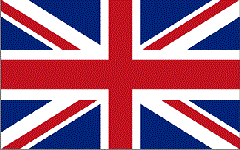Brief Description of Nandrolone
Nandrolone is an industrial-use chemical with the CAS number 434-22-0. This summary provides an overview of its chemical properties, hazards, safety measures, emergency procedures, storage requirements, and potential environmental impact.
1. Chemical and Physical Properties
Nandrolone is a crystalline solid that can form dimorphic crystals, with a melting point of 120-125°C and a boiling point of 434.5°C (at 760 mmHg). Its relative density is 1.13 g/cm³, with a flash point of 185.3°C and low volatility (vapor pressure of 2.25E-09 mmHg at 25°C). This chemical has low mobility in soil and a low bioconcentration factor (BCF of about 21), indicating minimal bioaccumulation risk in aquatic organisms.
2. Hazard Classification and Labeling
According to the Globally Harmonized System of Classification and Labeling of Chemicals (GHS), Nandrolone is classified as follows:
- Acute toxicity - oral, dermal, and inhalation, Category 4.
**Hazard Statements** include:
- H302: Harmful if swallowed;
- H312: Harmful in contact with skin;
- H332: Harmful if inhaled.
**Precautionary Statements** recommend avoiding ingestion or inhalation and wearing protective equipment during use. Safe handling involves using gloves, safety glasses, protective clothing, and ensuring proper ventilation to avoid dust or aerosol formation.
3. Personal Protective Measures
To avoid direct exposure, personnel should use the following protective equipment:
- **Eye and Face Protection**: Wear safety glasses meeting EN166 standards;
- **Skin Protection**: Use impervious protective clothing and gloves;
- **Respiratory Protection**: Wear a dust mask when handling large amounts of Nandrolone.
After handling Nandrolone, it’s essential to wash hands and skin thoroughly to reduce health risks.
4. Emergency Treatment Measures
In case of accidental exposure, follow these first-aid measures:
- **Inhalation**: Move the affected individual to fresh air. If breathing has stopped, provide artificial respiration.
- **Skin Contact**: Wash the skin thoroughly with soap and water.
- **Eye Contact**: Rinse the eyes with water for at least 15 minutes.
- **Ingestion**: Rinse the mouth with water; do not give anything to an unconscious person. Seek medical assistance immediately.
5. Firefighting Measures
While the flammability of Nandrolone is unknown, appropriate firefighting measures include using water spray, alcohol-resistant foam, dry chemical, or carbon dioxide. Firefighters should wear self-contained breathing apparatus and protective gear to prevent inhaling hazardous smoke.
6. Spill Response
In the event of a spill, personnel should wear suitable personal protective equipment. Avoid dust formation and ensure good ventilation. Spilled material can be swept up and stored in closed containers for proper disposal.
7. Storage and Handling
Nandrolone should be stored in a cool, dry, and well-ventilated area with tightly sealed containers. Avoid direct contact and inhalation during handling, and use ventilation systems.
8. Environmental Impact and Disposal
Nandrolone has a low bioaccumulation potential in aquatic organisms, but it should not be discharged into sewage systems or natural bodies of water. Waste Nandrolone should be transported to licensed chemical destruction facilities or incinerated in controlled environments with flue gas scrubbing. Containers can be triple-rinsed for recycling or, if not reusable, sent to a sanitary landfill.
9. Regulatory Information
Nandrolone is listed in various national and regional chemical inventories, such as the European Inventory of Existing Commercial Chemical Substances (EINECS) and the Vietnam National Chemical Inventory. Users must comply with relevant regulations during handling and storage to ensure safety for both personnel and the environment.
Conclusion
Nandrolone, as an industrial-use chemical, requires proper handling and protective measures to reduce acute toxicity risks. Fire safety precautions and ventilation should be ensured during transport and storage. Adhering to waste disposal and safe storage protocols will help mitigate potential risks to both human health and the environment.
 Zenuo Biotech
Zenuo Biotech 

